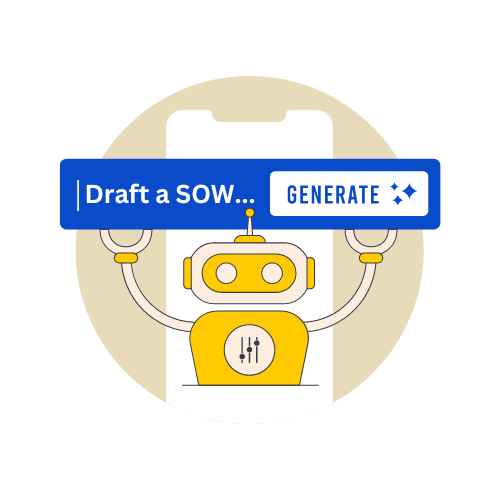Contracts are the primary record of your customers, when they became customers, how much they will pay you, for how long, and what you need to do to satisfy the engagement with them. For this reason, contracts are very important in the context of recurring revenue businesses where revenue recognition is important. Early on in your startup journey, you should be looking at how you can develop contract management best practices to improve efficiency.
One way you can do this is to build a strong deal desk function in your business. A Deal Desk is a function within a Software as a Service (SaaS) company that helps to streamline the sales process by managing complex or strategic deals and capturing the contract details of these deals to pass them on to the other teams in your company in an efficient and structured way. The Deal Desk team acts as a traffic officer between your sales team, finance team, and other stakeholders to ensure that deals are structured in the most advantageous way for the company and that there is a clean handover to the team after close actions such as billing or, further down the road, renewals.
What is a deal desk function?
The Deal Desk function typically includes team members with backgrounds in sales, finance, and legal (if you can find someone with all three, great!). They work closely with the sales team to understand the customer’s needs and the specific details of the deal, such as pricing, contract terms, and service level agreements. They also work with the finance team to ensure that the deal aligns with the company’s financial goals and revenue recognition policies.
The Deal Desk team plays a critical role in the sales process, particularly for large or complex deals that may involve multiple stakeholders, lengthy negotiations, or customized pricing structures. By centralizing the deal management process, the Deal Desk team can help to ensure that all parties are aligned and that the deal is structured in a way that maximizes value for the company while still meeting the customer’s needs. One of the other key things that this team deals with is the battle against the entropy of contracts. The sales team will naturally want to give a customer everything to get a deal across the line but this is not good for the company as it increases complexity and admin work for the after-sales team. The Deal Desk team is often to ones that say no to requests from the sales team.
Some of the specific responsibilities of anyone in the Deal Desk team for the implementation of contract management best practices might include:
-
Deal Structuring: The Deal Desk team helps the sales team and sales leaders to structure deals in a way that is beneficial to the company, such as by negotiating pricing, identifying upsell opportunities, or ensuring that the contract terms align with the company’s risk profile.
-
Risk Management: The Deal Desk team assesses and manages risks associated with each deal, such as potential revenue recognition issues, negotiating liability or,,contractual obligations that may impact the company’s profitability.
-
Sales Support: The Deal Desk team provides support to the sales team by helping to prepare better proposals, finding areas of opportunity, and providing guidance on deal structures and how to standardize these over time.
-
Financial Analysis: The Deal Desk team works closely with the finance team to analyze the financial implications of each deal, such as its impact on revenue, margins, and cash flow as well as the standardization of things like billing terms.
-
Process Improvement: The Deal Desk team continually reviews and improves the deal management process to ensure that it is efficient, effective, and aligned with the company’s goals.
Overall, the Deal Desk is an important part of a SaaS company that is often a hat that a lot of people can wear before a full-time team is employed and it helps to ensure that the sales process is streamlined, efficient, and effective. By working closely with the sales team, finance team, and other stakeholders, the Deal Desk team or person can help to structure deals in a way that benefits the company while still meeting the needs of the customer.
What parts of my contracts should I track?
As you scale up your software as a service business it’s important to start keeping track of all of the things that you have agreed to in your contracts. The deal desk team will help structure this data into a form that is usable as you scale. To ensure that this doesn’t become an issue later down the road, you must track certain data points in your contracts with customers.
Product, Master Service Agreement and Statement of Wo,rk Data
The first and most important data point that SaaS companies should track is what they have sold to a customer. This sounds easy for a fully software-based company but a lot of companies will self professional services early in their startup phase. Keeping track of this is important and doing this can take a lot of understanding of what’s being sold before you can beat it into contract management best practices.
Subscription Period Data
SaaS companies should also track subscription start and end date. This includes information about the customer’s subscription plan, pricing, and payment details. Subscription data is essential for billing purposes, but it can also help SaaS companies analyze which subscription lengths are most popular and what pricing strategies work best.
Jurisdiction Data
Jurisdiction is the place whose laws take precedence when there is a legal disagreement. This can be particularly important for SaaS companies where different areas have different laws for data privacy.
Liability Limitations Data
You should always be keeping track of the amount of aggregate liability that you have agreed to.
Billing Terms Data
Understanding when and how often you need to bill a customer should be one of the first things you track.
Refund and Break Clause Data
If the customer no longer wants to use your platform you should be able to understand what occurs in this situation. Do you need to refund them?
Bringing together contract management best practices in a revenue waterfall
A revenue waterfall is a visualization of the various factors that contribute to the company’s revenue based on your contract tracking data. It is a way to track and understand how revenue is generated and allocated across the different components of the business.
A revenue waterfall typically starts with the company’s top-line revenue, which is the total amount of revenue generated by the business. This revenue is then broken down into various components that contribute to the company’s overall revenue.
Some of the typical components of a revenue waterfall in a SaaS company can include:
-
Monthly Recurring Revenue (MRR): This is the predictable and recurring revenue generated from subscription-based services. MRR is a key metric for SaaS companies as it provides a stable foundation for growth and helps to calculate the company’s valuation.
-
Annual Contract Value (ACV): ACV is the total amount of revenue expected to be generated over a year from a customer’s subscription. This can be used to forecast revenue and help determine pricing and discounting strategies.
-
One-Time Charges: These are non-recurring fees charged to customers for services such as implementation or customization.
-
Upsells and Cross-Sells: These are additional products or services sold to existing customers, which can help to increase revenue and customer lifetime value.
-
Churn: Churn is the percentage of customers that cancel or do not renew their subscriptions. Understanding churn is critical for SaaS companies as it can impact revenue growth and customer acquisition costs.
-
Discounts: Discounts are reductions in the price of a subscription and can impact the company’s revenue. While discounts can help to attract new customers, they can also reduce revenue and impact profitability.
By visualizing the revenue waterfall (download a template MRR waterfall), SaaS companies can gain insights into how different components of the business contribute to overall revenue. This can help them to identify areas for improvement, such as reducing churn or increasing upsell opportunities. It can also help to identify potential risks or areas of weakness, such as reliance on a small number of customers for a significant portion of revenue.
Overall, a revenue waterfall is an essential tool for SaaS companies to understand and optimize their revenue streams. By tracking and analyzing the various components of the waterfall, SaaS companies can make data-driven decisions to improve their business and drive growth.
At the end of the day, you’ll struggle to scale if you don’t look to implement contract management best practices to improve efficiency. Without these improvements, you’ll start having a lot of admin work that is just not scalable. Tools like Contract Sent are built to help this scaling process.










